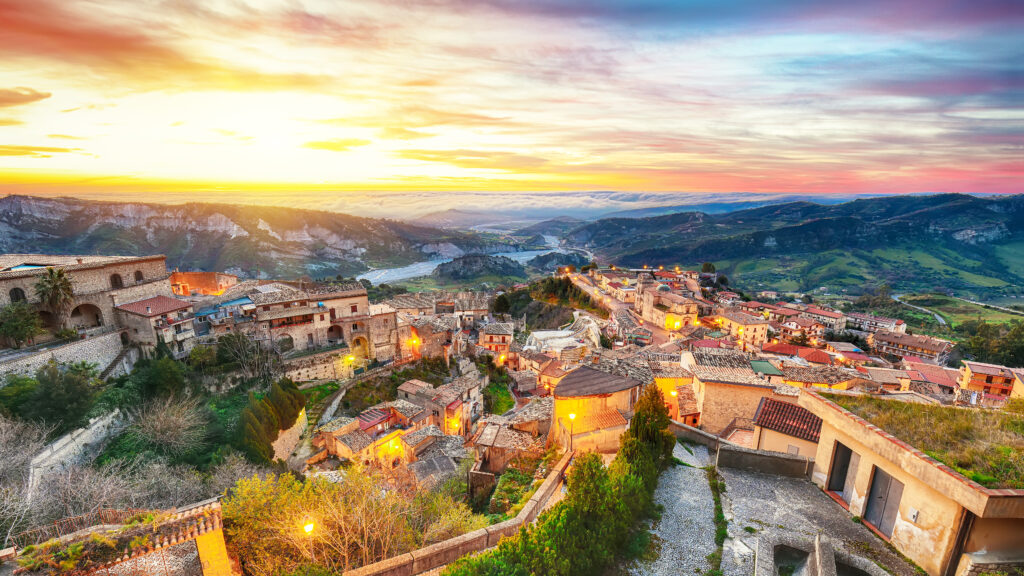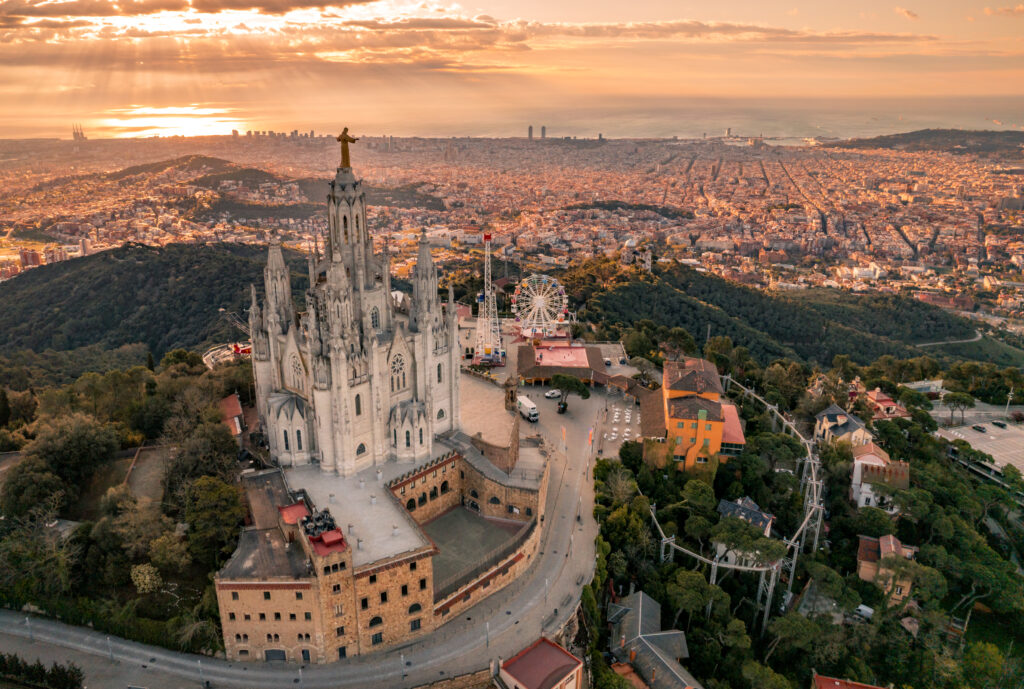Chris Blumhofer—Year C Easter 3-6
Welcome to the Gospel Reverb podcast. Gospel Reverb is an audio gathering for preachers, teachers, and Bible thrill seekers. Each month, our host, Anthony Mullins, will interview a new guest to gain insights and preaching nuggets mined from select passages of Scripture in that month’s Revised Common Lectionary. The podcast’s passion is to proclaim and boast in Jesus Christ, the One who reveals the heart of God, Father, Son, and Holy Spirit. And now onto the episode.
Anthony: Hello, friends, and welcome to the latest episode of Gospel Reverb. Gospel Reverb is a podcast devoted to bringing you insights from Scripture, found in the Revised Common Lectionary, and sharing commentary from a Christ-centered and trinitarian view.
I’m your host Anthony Mullins, and it’s my delight to welcome our guest, Dr. Christopher Blumhofer. Chris is an associate professor of New Testament at Fuller Theological Seminary and prior to entering academia, Chris worked for three years with Christianity Today’s leadership media group.
He has written extensively for general audiences and wrote the publication, the Gospel of John and the Future of Israel. He’s an ordained ruling elder in the Presbyterian Church, USA, and a member of the Society of Biblical Literature. Chris earned a PhD from Duke University from right here in beautiful Durham, North Carolina.
Chris, thanks for being with us and welcome to the podcast. And since this is your first time on the pod, we’d like to get to know you a little bit, your story, your backstory, and how you’re participating with the Lord these days.
[00:01:40] Chris: Thank you, Anthony. It’s great to be with you and really, an honor for me to be invited on this podcast and to speak with you and to open scripture with you.
So, thanks for capturing a lot of my story there. I think what you left out of that story is the parts of my home life with my wife and our two young daughters here. So, when I’m not in teaching mode or in church mode, I am at soccer practices and cello practices and living the life of trying to be faithful to a life of fatherhood and the home life that God has given me here in Durham also.
So, that’s a little bit about me there. You captured my role. I teach at Fuller Seminary. I teach New Testament. And Fuller’s, on the map of seminaries, Fuller’s kind of a big seminary, which means we teach a lot of Intro to New Testament. Everyone in every program across the school of theology and in our school of psychology has to take Intro to New Testament class.
So, I do a lot of that. I’m doing that right now this quarter. And I love it. I love introducing people to the Bible and a lot of people who are Christians who are coming to know the New Testament again. 15, 20, 30 years into their life of faith, they’re reading the New Testament again, in some ways reading it for the first time with new eyes.
So, that’s a joy that I get in my vocation. Locally, I serve pretty actively in our church. I have this role as what’s called a parish associate, which is a role that Presbyterians made up to get ordained folk who don’t serve regularly in a local church to be authorized to do so. So, I get to lead a monthly prayer service and preach there. And I’m really delighted to balance this world of the academy and the church. I think where possible, it’s important for folks who do biblical scholarship to be deeply plugged into the life of the church too and keep those worlds as close as possible.
[00:03:43] Anthony: As you teach the Intro to New Testament [course], I’m not sure the book of Revelation is right at the forefront at the start, but that’s where we’re going to be parked this month.
And we know with the book of Revelation, Jesus Christ is the Revelator. and the apostle John is our guide through that revelation. And as I understand it, you’ve done extensive research on the person, the apostle John. So, my question is this, what can you share about John to help preachers and teachers contextualize these Revelation texts we’re going to look at this month?
[00:04:15] Chris: Yeah, that’s a great question. So, most people in my intro classes are nervous about the book of Revelation, either because they’ve read it a long time ago, and find it intimidating, or because they’ve heard it referred to in a lot of ways that make it seem like just a thing they don’t want to touch.
But I think it is helpful to draw it close to the rest of the New Testament like your question does. So, in church tradition, the authorship of the Gospel of John and the book of Revelation are often seen together, where John the apostle is the direct author of both of those texts.
And I think that does capture a lot that we need to see about Revelation and the gospel of John. Because, actually, it’s in the way of reading these books that the church gives us, we especially see emphasized that they give us a new perspective on Jesus, a new perspective on ourselves. In Christian iconography, the image associated with John the apostle is the eagle, because the eagle flies so high over the earth and looks down and gives you this new perspective and sees things that you can’t see from the ground.
And I think that really captures both this uniqueness of the Gospel of John and also the unique vision of Jesus and the church and the world that we meet in the book of Revelation. In terms of the kind of history behind that interpretation and those ways of understanding Revelation, the church tradition puts the Gospel of John and the writer of John probably starting around Israel Palestine, but eventually moving to the city of Ephesus, which is in modern day Turkey, kind of on the west coast of Turkey today. And which was a major city in the ancient world, huge population, very important, very wealthy center of trade. And a strong, a very important political city in the ancient world.
Later church tradition puts two important early Christians in that city also. The first is Justin Martyr. We call him Justin Martyr because he died at Rome. But in his early life he was in Ephesus. And also in the second century, a bishop called Irenaeus. We usually title him Irenaeus of Lyon because in his adult life, he served the church in what is now France. But he also started his life in that same part of Asia Minor, a city called Smyrna.
Both of those writers in the second century attribute the book of Revelation to the apostle John. And so that gives a little extra weight to the theological insight that these books are similar by connecting them at the level of that historical authorship too.
So, like everything in biblical study, there’s great debate about this. And the authors never claim to be the same people, but I think they’re associated in church tradition because of this commonality of location, and most importantly, because of this perspective just refreshes everything you thought you know about yourself.
[00:07:39] Anthony: Yes.
[00:07:40] Chris: And about God and about Jesus. And that’s really what these two texts have in common.
[00:07:43] Anthony: Yeah, that’s really helpful because I have born witness to an interpretation and hermeneutic of Revelation that seems to get askew from the apostle that we read in the book of John.
[00:07:48] Chris: Yeah.
[00:07:49] Anthony: And if they are truly the same person, that does highlight the continuity to make the center the center, who is Jesus the Christ, on the throne, being worshiped. And we’re going to see that in the text we’re looking at this month. So, thank you for that background.
Let’s do this. Let’s dive into the lectionary text we’ll be discussing. Our first one of the month is Revelation 5:11–14. I’ll be reading from the New Revised Standard Version, the updated edition. It is the Revised Common Lectionary passage for the third Sunday in Easter, May 4.
Then I looked and I heard the voice of many angels surrounding the throne and the living creatures and the elders; they numbered myriads of myriads and thousands of thousands, singing with full voice, “Worthy is the Lamb that was slaughtered to receive power and wealth and wisdom and might and honor and glory and blessing!” Then I heard every creature in heaven and on earth and under the earth and in the sea and all that is in them, singing, “To the one seated on the throne and to the Lamb be blessing and honor and glory and might forever and ever!” And the four living creatures said, “Amen!” And the elders fell down and worshiped.
Chris, I’m curious. What would you suggest is the significance of the slaughtered Lamb being on the throne — the imagery of that? We know he’s the roaring Lion. We know he’s the glorious King, slaughtered. But in Revelation he’s shown to us as a slaughtered Lamb. What should we take away from that?
[00:09:35] Chris: This is really everything for John. He uses this title a lot in the book of Revelation. The description of Jesus as the Lamb occurs twenty-eight times. That’s not a coincidence. John loves numbers, and twenty-eight, as most of us will remember from school, is seven times four. These are both numbers of completion, perfection. So, we’re seeing in this passage for the first time in the book of Revelation, this designation of Jesus that fits him perfectly for John.
And we’re not ready for this. It’s really a bait and switch. To understand the full whiplash of the scene, we have to go up to the beginning of the chapter where John is seeing this scroll and there’s no one able to open it, and to read the story and let it move forward.
And this angel is there holding it. He’s weeping because he can’t see it opened. And an elder encourages John and says, “Do not weep. See, the Lion of the tribe of Judah, the root of David has conquered, so that he can open the scroll and its seven seals.” And then he, John looks, and he sees a Lamb.
Revelation is out to surprise us here. The One who overcomes all the evil and all the destruction in the world, the One who breaks all the cycles of sin, has done it, through being faithful to the point of death. And he wants us to imagine the conquering strength of a lion, but to picture, to see, that conquering through faithfulness, purity, holiness in Jesus, the Lamb that was slain.
So here are the strength and the glory of God are revealed in the crucified Jesus. And if you want to know real strength in Revelation, you don’t see real strength until you see love that is strong enough to die for its enemies, to be faithful to the point of death. That’s what strength conquering looks like in Revelation.
So, this Lamb title is one of the key ones for John. It’s not just a title he pulls out of a grab bag of titles for Jesus. Unless Jesus is the Lamb of God, then the whole message of this book unravels because this book is written especially to suffering Christians, people who could, may struggle to do so, but their lives resembled people who were led, as the psalm says, like sheep to the slaughter. They knew that feeling and so to associate them with Jesus, the One who was slain, but has been raised by the Father, that is a crucial way of understanding who God is and also understanding themselves.
[00:12:23] Anthony: And it stands in such stark contrast to the empires of this world and triumphalism. We want the Lion, right, to conquer our foes. And yet God comes to us as a Lamb cruciform, laying down his life, which is opposed. That’s why the Kingdom of God is such an alternative form of living, right? And I’m reminded of what Richard Hayes once wrote, that the church community is called to embody that alternative order that stands as a sign of God’s redemptive purposes in the world. And it looks like a Lamb, slaughtered.
I’m curious, Chris. For me, when I come to a text like this — it’s just so glorious, so filled with song and worship. How do you capture that in a homily, in a sermon to a congregation? But I’m going to ask you to do that. How would you herald this good news to the congregation?
[00:13:17] Chris: Especially because Revelation is so rich in imagery, it’s so full of songs and poems, I think it’s important to think about engaging this passage in the context of a whole worship service. So, I will answer your question about preaching, but I would just encourage, there are so many hymns and praise songs that draw on the text of this, the text of this book. Yes, there are so many prayers that are written in this book that we can pray again and learn to pray. So, I would really try to immerse the entire service in Revelation. Because at the end of the day, what John’s after is, he wants to shift our perspective on the world, give us a new orientation to it, and we can do some of that work discursively, in a sermon. God’s given us art and poetry and song, and Revelation is even using that, and it’s not a coincidence. But the way that God will grab and renew our imagination, will include all of those different media,
[00:14:21] Anthony: and I would say, as you mentioned previously, iconography as well, as a way to visualize what’s being pictured here.
[00:14:28] Chris: Yes. Yes. Some, I have heard some say, that this is the most visual book in the Bible. It’s full of images, and I think that’s right. And so, to let some art engage our interpretation is entirely fitting, for Revelation especially. But let me dive into the sermon portion of a worship service here.
So, if I was preaching this text, I’d do a couple things as I was approaching it. I would really want to set it in the context of the problem that it’s responding to. So, this praise of the Lamb, “worthy is the Lamb that was slaughtered” — actually responding to the question that John asked up in verses two and three, “who is worthy to open the scroll and break its seals”, or rather that’s what the angel asked.
And John is weeping because no one steps forward to do this. And what that’s responding to in the text, this moment in the text, is this challenge. What if we are stuck in the endless cycle of violence, destruction, futility that we are in? What if we’re stuck there? And that’s what verses two and three of this chapter put before us.
When the Lamb steps forward, when the Lamb is found worthy, that is good news for all sorts of reasons. But in the plot of this chapter, it’s because the Lamb is the One who will move the story forward. God is not going to give up on this world. As broken and as full of suffering as it is, it is not outside of the reach of God. And it is the Lamb, the One who gave his life for the world, who is worthy to move the story forward into a new chapter. So, it’s not as if Revelation happens, the whole drama of Revelation happens, because God finally runs out of patience and now his anger is let loose on the world or something like that here.
The One who moves the story forward is the One who is totally defined by his love for what he made — his perfect love, his jealous love. But it is the life of the Lamb of God that moves history forward in Revelation. That’s what this scene puts before us.
If I was going to preach about that, I would want to linger on what we are waiting for and what it is that will move the story of this world, the story of our lives forward. Because I think John is giving us a deeply encouraging word, but we have to be in touch with how stuck we are in order to do that. We’re taking for granted here that people may have in their ear the situation of the churches that we’ve already read about in Revelation two and three. These are churches that, they’re in all sorts of situations, but what they have in common is a need to hold fast to Jesus at this time. Some are suffering, some are being persecuted and died. Some are wealthy and complacent. They’re all being called back to Jesus, to this fresh understanding of who he is and recommitment to him for the unique struggle of following him in their situation.
I think the third thing I’d want to hit on if I was opening up this passage for a congregation is, I would want to talk about the “all-ness” of this passage, the comprehensive scope of what Jesus offers every creature in heaven and on earth and under the earth and in the sea, and all that is in them. Sing praise. This is good news to everyone and there is no other story of the world, for the world, than this one here.
If I might say one more thing, Anthony.
[00:18:43] Anthony: Sure.
[00:18:44] Chris: I wouldn’t want to let go of what we talked about in that first question about the importance of the Lamb being the image we’ve seen there. I once heard a music album, a jazz album, reviewed. And the reviewer, he had this perfect line. He said that the musician — he plays the wrong note, but he puts it in the right place.
And I feel like it’s important to let John play the wrong note, shock us with the image of the Lamb in the exact perfect place, in the midst of our longing, in the midst, when we’re wondering who will move the story of our lives forward. Are we one scientific discovery from getting over cancer or are we one administration away from being able to solve our political problems?
It’s not going to be cleverness or our strengths that save us. It is going to be the Lamb. And John puts what might feel emotionally to us like the wrong note here by putting the slain Lamb at the center of this image. But he puts it in exactly the right place. And I think that’s what Revelation calls us to understand and to trust.
[00:19:47] Anthony: Well said, Chris. And, as I’m looking over this text, and you mentioned this, all creatures are singing with full voice. So, would you like to sing one of those hymns you mentioned before? Could this be a world presentation of Chris Blumhofer singing a song on this podcast?
[00:20:07] Chris: No. I don’t think so. We’re going to pass on it. I don’t have one that comes immediately to mind, so I’m going to pass on that. Thank you.
[00:20:09] Anthony: Okay. Fair enough. Let me ask you this, just one last follow up question. It, Revelation, has been often misunderstood. If you could encapsulate what John is really trying to accomplish in a sentence or two through this Revelation, what would it be?
[00:20:25] Chris: It is that Jesus is much closer than we think. And that he is completely engaged in the history and story of this world in our lives. I see the book of Revelation structured in a series of sort of waves. The first wave is chapters one through three where Jesus comes to the church. He’s right there walking amid the church, speaking to the churches.
And this passage we’re in now in chapter 4–11 is this second wave of Jesus coming to the world. Moving history forward with this scroll, with the scroll that is being opened. In the final wave, Jesus comes against the great enemy Satan, who’s manifest in the world, but is actually a spiritual power behind it.
But in each of these movements of the text, Jesus is much closer and much more engaged than it might feel like he is if you are on the ground suffering. And so, John is opening up our eyes. Or as I sometimes say, when I teach this class, he’s giving us this pair of glasses that we can put on and all of a sudden, we can see the world in full color, and it is much more colorful than we imagined beforehand. Yes.
[00:21:37] Anthony: Hallelujah. Praise God. And that leads me to believe, Chris, that in its final summation, Revelation is good news, because at the center of it is the Lamb. And so, if you hear anyone with a hermeneutic that leads you to believe that Revelation is bad news, look again. Put on those glasses Chris mentioned and see the color that is before us and the person of Jesus Christ.
Alright, let’s transition to our next text. It is Revelation 7:9–17. It is the Revised Common Lectionary passage for the fourth Sunday in Easter, which is May 11. Chris, would you read it for us please?
[00:22:20] Chris: Yes. Happy to do it.
After this, I looked, and there was a great multitude that no one could count from every nation, from all tribes and peoples and languages, standing before the throne and before the Lamb, robed in white, with palm branches in their hands. They cried out in a loud voice saying, “Salvation belongs to our God who is seated on the throne and to the Lamb.” And all the angels stood around the throne and around the elders and the four living creatures, and they fell on their faces before the throne and worshiped God, singing, “Amen! Blessing and glory and wisdom and thanksgiving and honor and power and might be to our God forever and ever! Amen.” Then one of the elders addressed me, saying, “Who are these, robed in white, and where have they come from? I said to him, “Sir, you are the one who knows.” Then he said to me, “These are they who have come out of the great ordeal; they have washed their robes and made them white in the blood of the Lamb. For this reason, they are before the throne of God and worship him day and night within his temple, and the one who is seated on the throne will shelter them. They will hunger no more and thirst no more. The sun will not strike them, nor any scorching heat, for the Lamb at the center of the throne will be their shepherd. And he will guide them to springs of the water of life, and God will wipe away every tear from their eyes.
[00:23:22] Anthony: There’s a lot going on in this text, and so we would really appreciate your exegetical overview of what you’re seeing in this text.
[00:23:30] Chris: Sure. Whenever a passage starts with the words after this, my reflex is to scroll up the page a little bit.
[00:23:37] Anthony: Sure.
[00:23:38] Chris: So, we have to see its context as always. And again, this can be intimidating in Revelation because you get this kind of nice, clear, encouraging scenes, and you get worried that if you go one paragraph up or down, you’re just going to be in the deep end all of a sudden. But it is worth it.
So, where we are is in chapter 7. We’re in this interlude. We’re still in the opening of the seals, but we’re in this interlude with the seals. And history is unfolding as the seals are broken, and as each seal is broken, the suffering on the earth has increased across chapter 6. And here at chapter 7, we are on the cusp of the seventh seal being opened now.
In fact, chapter 6 ends with the most powerful people on earth crying out to the rocks and saying, “Fall on us, and hide us from the face of the One seated on the throne and from the wrath of the Lamb, for the great day of their wrath has come, and who is able to stand?” So, this is the expectation coming into chapter 7, and we might justly expect that we’re about to hear about the worst suffering of all.
But what we get at the beginning of chapter 7 is this pause in the action while the angel puts a seal on the forehead of the servants of God, and in the paragraph right before this, 144,000 people are sealed from Israel. That’s symbolic of the fullness of the people of God. And then our vision begins.
And the question, who can stand in the face of God’s judgment, is answered here. That was a question at the end of chapter 6. Who can stand? There’s a great multitude that no one could count, from all these tribes, peoples, languages, and nations standing before the throne. That’s the answer to the question.
Who can stand? This multitude is able to stand before the throne in worship. The God who judges is also the God who heals. And in this scene, we’re seeing that the nations are indeed coming to him and can stand in his presence. It’s interesting that this is something that the most powerful people on earth — it’s unintelligible to them. They’re unaware of it. But John can see it because he can recognize something else with those glasses on. They cry out with this verse that has become a great praise song, “Salvation belongs to our God who is seated on the throne and unto the Lamb.” And everyone sings back in response to them.
And then John asks about the identity of these people. So, I want to ask a couple of questions about the details here. I always think that texts get more interesting when we ask about their details, so they’ve all come out of this great ordeal. That’s an interesting phrase. We actually hear about the great ordeal or a great tribulation in the book of Daniel.
We hear about it also at the little apocalypse in the Gospel of Matthew 24. And the idea is that there will be a period of great upheaval, of war, of scarcity, a great increase in immorality and injustice right at the time where the age is about to be redeemed by God. That’s what John hears, that the people who stand before him are those who have come through the great tribulation.
Actually, that’s a very similar phrase to how Jesus speaks about it in Matthew 24. You’re looking at the people who have come through this tribulation and they’ve come through the ordeal by washing their clothes white in the blood of the Lamb. There’s so much here.
First, this is an image of faithful witness and identification with Jesus. These are the ones who have washed their life in the blood of Jesus. And that could mean that they’re the ones who have come through the tribulation, because they’ve been killed for their faithful witness — kind of dying in faithfulness and in continuity with Jesus’ own faithful life. Or that they have identified with him, not necessarily dying, but they have managed to persevere because of their faith and the example of Jesus.
Either way, these are Jesus’ people. They belong to him completely. In Genesis 49, we get this great picture of the lion of the tribe of Judah, or Judah as a lion, and it says that he will wash his robe in the blood of grapes. And John takes that image from Genesis here. He twists it a little bit, and here the people of the Lamb wash in his blood, but instead of being stained, they’re purified by that blood.
Blood is a purifying agent in the book of Revelation here, which is really a fascinating rethinking of that imagery here. And as John continues to tell us about these people, we see, he sums up for us their life before God. Because they’ve identified themselves with Jesus, they live fearlessly in the presence of God and before the throne of God.
It’s not a throne of judgment for them. It’s a comforting place. They have that seal on their forehead. Now, later in Revelation, the beast will put a seal on the foreheads of the people who serve him. It’ll be a kind of condition for membership to have the seal of the beast. But here God gives his own seal, and it is not one that is exclusive or punishing but is one that is protective.
They live in this existence defined by God’s mercy — endless light, no hunger or thirst, no deprivation here. And where God is wiping away the tears from their eyes. Beautifully, strangely, the Lamb is their shepherd here. John is pulling on all these images to renew our imaginations about the fullness and the peacefulness of their life before him.
So, I’d want to open up a lot of these things. Maybe I’d also add the whole thing is suffused with a sense of victory. It’s celebration.
[00:30:56] Anthony: Yes.
[00:30:57] Chris: They’re dressed in white. They’re holding palm branches, which were pretty common symbol of victory in the ancient world, in both in Judaism and also in the broader Greco-Roman world. And they’re not hailing Caesar as their victor here. They’re hailing the Lamb, but there’s this sense of celebration. It’s like Palm Sunday, part two, where everyone has gone through the tribulation and has been brought to this celebration.
[00:31:14] Anthony: You mentioned it earlier that John brings us to a few twists in Revelation. He helps us to reimagine what is. And I find verse 17 interesting because of the inversion that we see that the Lamb is actually the shepherd, and it’s usually the other way around. Can you tell us a little bit more about this?
[00:31:35] Chris: It’s an amazing picture, that the One who has gone before us and come out the other side, the One who has conquered death and overcome judgment, he’s now our leader. And it’s so fitting. It actually fits with a great deal of New Testament imagery for Jesus as the firstborn among many brothers and sisters. He’s the leader of this new family. He’s the Son of God, but we are brothers and sisters of him. Our elder brother goes before us.
John takes that and in a way that highlights the martyrdom of Jesus and the martyrdom of his people in this book. The Lamb, the slain Lamb, shepherds the people of God, the people of God who are under duress, who are persecuted. And know that, firsthand, these people whose lives are so awful right now, John sees them in peace, having come through the tribulation with the One who has gone through it before them on their behalf.
[00:32:35] Anthony: As I’m thinking about Jesus and the inauguration of eschatology, the end, we need to know that there is something to look forward to in the midst of suffering. And I think John has given us such a vivid picture of what will be the eschaton that God is caring well for his people.
[00:32:59] Chris: Yeah.
[00:33:00] Anthony: Hallelujah. Praise him that we have this vision of what will be as we try to live into that in the here and now, right? So, thank you for that.
Let’s transition to our next pericope of the month. It’s Revelation chapter 21:1–6. It is a Revised Common Lectionary passage for the fifth Sunday in Easter, which is May the 18.
Then I saw a new heaven and a new earth, for the first heaven and the first earth had passed away, and the sea was no more. And I saw the holy city, the new Jerusalem, coming down out of heaven from God, prepared as a bride adorned for her husband. And I heard a loud voice from the throne saying, “See, the home of God is among mortals. He will dwell with them; they will be his peoples, and God himself will be with them and be their God; he will wipe away every tear from their eyes. Death will be no more; mourning and crying and pain will be no more, for the first things have passed away. And the one who was seated on the throne said, “See, I am making all things new.” Also, he said, “Write this, for these words are trustworthy and true.” Then he said to me, “It is done! I’m the Alpha and the Omega, the beginning and the end. To the thirsty I will give water as a gift from the spring of the water of life.
It may go without saying, Chris, that this particular text is a favorite for obvious reasons, as believers look forward to the new heaven and new earth. Again, I invite you, if you’re preaching this text to tell us, how would you communicate the weightiness of what is being spoken here?
[00:34:52] Chris: It’s a great question. It’s the sort of text that preaches itself. I was reading one preacher from a long time ago, recently, but he opened his sermon saying, “This passage is so vivid and powerful that I should just read it in front of you three more times and call that my sermon.”
[00:35:12] Anthony: Yes.
[00:35:13] Chris: And I’m sort of tempted to do that with things like this, rather than explaining it to death. People have some kind of long exposure to it that captures what it’s really trying to communicate.
So, the imagery is really rich here, but the first thing I’d want to do, and this comes from the text, I t comes from verse three: “See, the home of God is among mortals. He will dwell with them. They will be his people. God himself will be with them and be their God.” I would take that declaration, try to open that up.
We — all God’s people, and all of this earth, is meant to have its home in God. God is the One in whom we dwell, the One in whom we flourish, and that was the beginning of our creation and God has committed to it being our end as well. We want to linger on the importance of seeking a home in God.
There are many great Christian writers who have thought about this. The most famous example of it is Saint Augustine. And it is a well-known line that, “our hearts are restless until they rest in you.” To linger on the longing for a home, I think, is one way of putting ourselves in the spiritual, emotional, existential condition that this text addresses.
It’s not really fair sometimes at eight-thirty in the morning, when my church starts to ask people to get to a place of longing for this, because we’re still waking up. But help our hearts be awake to the hope that God is speaking here. I think that’s the first task of a sermon that takes on a text that is just marvelous in its imagery and vision for who we are here.
After that I would want to unpack some of the imagery, and there’s lots of the imagery to dive into. Almost every phrase between the commas in this passage is worthy of its own exposition. It’s just soaked in the Old Testament — this image of a new heaven and the new earth, for the first heaven and the first earth have passed away.
These promises come to us from Isaiah 65. The exile is over. That’s another kind of home imagery. Also, the exile is over, and the hardship of that life has been redeemed. The sea being no more — in the Bible, the sea often represents this kind of chaos that’s in revolt against God. And so, the elimination of the sea is this kind of revolt replaced by the peace of God’s presence.
Also, just a few chapters before this in Revelation, the sea — that was the path by which Rome, Babylon, got wealthy and exploited the whole earth. And so, for the sea to no longer exist, it also suggests that the exploitation that once took place on the sea is a thing of the past as well. The imagery of the city coming down as a bride adorned for her husband — these are pictures of union, reunion, blessing, joy. And I, even in hearing myself say that, the specific thing it’s describing is almost always connected with an emotion, a celebration, a peace, something like that. And holding onto that connection is important, I think. So, this comes from Isaiah 25, a passage of comfort, of a passage of encouragement in which God through the prophet, encourages his people to remain faithful even through great hardship, and then speaks to their hope.
And this is what Isaiah 25:6–9 says.
On this mountain the Lord of Hosts will make for all peoples a feast of rich food, a feast of well-aged wines, of rich food filled with marrow, of well-aged wines strained clear. And he will destroy on this mountain the shroud that is cast over all peoples, the covering that is spread over all nations; he will swallow up death forever. Then the Lord God will wipe away the tears from all faces. And the disgrace of his people he will take away from all the earth, for the Lord has spoken. It’ll be said on that day, “See, this is our God; we have waited for him, so that he might save us. This is the Lord for whom we have waited; let us be glad and rejoice in his salvation.
John is standing in the tradition of this text and saying, we are here now. The home of God is among mortals. He will wipe away every tear from their eyes. Death will be no more. This speaks most loudly to people who have fresh awareness of the sting of death, the pain of deprivation, scarcity, injustice.
But John is out to just baptize our imaginations in the fact that this is the end for us. We’re moving in this direction. We can let this orient ourselves today and certainly look forward to it being our life in the world to come.
[00:40:39] Anthony: That was a delicious word, and I am going to hold onto the way you phrased it, baptizing our imaginations. After speaking with a pastor last night, whose wife recently died, and knowing the pain and the loneliness that this friend of mine is feeling, we long for this. There is a sense of what we have truly longed for comes to pass. And it does come to pass, and the One who is seated on the throne says this, “I’m making all things new.”
And sometimes, Chris, I wonder if we pass over that. We don’t think of the implications, because the One sitting seated on the throne doesn’t say, “I’m making all new things,” as if, you know what, Father, we’ve got to go to plan B. This is a mess. We’ve just got to start over. But instead, he’s making what is new, renewing, recreating, baptizing what was into what will be. Hallelujah. Praise God. So, can you talk to that, this recreation that the One on the throne is speaking of?
[00:41:44] Chris: That’s a great word. Great attention to detail. All things being new. Reminds me of that other text that also speaks of all things worked together for good in Romans eight. And that is God’s reclaiming of everything so that nothing is lost, and nothing is left behind in the work of redemption.
This promise and expectation speaks to me of new creation. So, the word, the verb there is the word for, “to make.” It’s a creation word, and it’s a new creation word. So, in the same way that God raised Jesus from the dead, new creation happens in the body of Jesus. I think I see this promise in Revelation lining up with that, “making all things new,” the new life of God suffusing everything, reclaiming everything. So, we may think about the resurrection scenes and the gospels. This is read in the season of Easter and we’re kind of living in that moment of being reminded of Jesus, being among his people in a way that is continuous with who they knew him to be in his earthly life. But it’s also animated by something new. As Paul says in first Corinthians 15, it was sown corruptible, it was raised incorruptible.
I think you know, Anthony, we’re working within the limits of our capacities and imaginations here. But what we see with clarity is that God is committed to creation, committed to this world he has made and the people he is made in it. And to recreation — he doesn’t just wipe the slate clean, but he redeems. And John is comforted by that, calling us to see that and let ourselves view our world in that way as well.
[00:43:37] Anthony: Yeah. It’s interesting how it works itself out. And this may seem like a trite example, but I remember the first time my wife and I went house shopping. And I wanted something fairly new, so there wouldn’t be much maintenance, because I’m not exactly a handyman. But she loves to take older homes and restore them, to renew them, to find the beauty where there was ashes, where there was brokenness. And in thinking about that, pondering the way that she sees a home, it teaches me something. It tutors me in the way of God, that he takes what was broken, battered, in the depths of despair and renews it, recreates it into the “Imago Dei,” the way things are, and the way things were meant to be. And it’s so beautiful, and it speaks to — it’s a pertinent word for here and now, because I can see brokenness all around me. I love what you said. God is committed to his creation, and he’s really good at what he does. Certainly, in terms of recreation.
Let’s transition to our final text of the month. It is Revelation 21:10, and 22:1–five. It is a Revised Common Lectionary passage for the sixth Sunday in Easter, which is May 25. Chris, we’d be grateful if you’d read it for us, please.
[00:45:01] Chris: I’d love to.
And in the spirit he carried me away to a great, high mountain and showed me the holy city Jerusalem coming down out of heaven from God. … Then the angel showed me the river of the water of life, bright as crystal, flowing from the throne of God and of the Lamb through the middle of the street of the city. On either side of the river is the tree of life with its 12 kinds of fruit, producing its fruit each month, and the leaves of the tree are for the healing of the nations. Nothing accursed will be found there any more. But the throne of God and of the Lamb will be in it, and his servants will worship him; they will see his face, and his name will be on their foreheads. And there will be no more night; they need no light of lamp or sun, for the Lord God will be their light, and they will reign forever and ever.
[00:45:57] Anthony: Hallelujah. I think sometimes we make the mistake in biblical interpretation, asking the texts, what does this tell me about me or what I’m supposed to do? And I think the first course of action is to find, what does the text reveal about who God is? So, can you help us with that? What do these scriptures reveal about who God is and what we can anticipate?
[00:46:19] Chris: Well, it’s a great instinct and a great question, Anthony. In a narcissistic age, we might actually think it is all about us. But it’s actually not. This passage — like so much of Revelation, but again, the details are important — this passage teaches, insists on the fact, that God intends this restoration for us, for his creation. It is the will of God, and it is joined to the character of God for this to be the future of the world.
And this is meant to be for us, as the hymn says, “a strength for today and bright hope for tomorrow.” This is God’s commitment. It’s not based on us. Or, if one of those seven churches, beginning of Revelation, decides to throw in the towel and quit, this is still going to happen. God is more faithful than we are.
As we look at the details of the passage and what or how God’s commitment to restoration plays out, we see a lot of the Old Testament caught up in this passage. But especially Genesis.
I would encourage anyone who’s studying this passage, go back and read, especially Genesis two and three. Let your imagination kind of work in the resonance between these two passages. In Revelation, we get almost a kind of urban garden. There’s a river running right through it, just like the Garden of Eden. There’s a tree of life, which we haven’t seen in a few pages, but it’s back again.
Let your mind try to picture this so you have a main street in the city with a river flowing right through it. And the tree actually seems to be straddling the river, so its roots go onto both sides of the city. There’s not like a good side of the tracks, bad side of the tracks here. Nothing accursed will be found in that city anymore.
And think about the curse from Genesis three, when sin entered the world. And this curse resonated through all of creation and all of our relationships. And in place of that curse is the throne of God and the Lamb in the midst of it — opportunity, the ability, to be face to face with God, which is something that has been unavailable to people since the garden. We have brief glimpses of face-to-face encounters or almost face-to-face encounters, in the life of Moses especially, but for the most part, that doesn’t happen in the Bible.
But here, all of God’s people see his face. They see him and his name is written on their foreheads. Such a fascinating image of God looking at us and seeing us but also seeing himself in us. And there’s no more night, no need for light of lamp or sun. Again, these are all, these are additional Old Testament images. They speak to the assurance, the comfort, and the peace of this communion that God is committing to establishing. And it’s really a recreation of the communion of Eden, the communion that the tabernacle and the temple sustain, the communion that Jesus brought. And here it finalizes.
[00:49:41] Anthony: I can’t help but think of, since we just recently transitioned through a transfiguration Sunday. You’re mentioning seeing God face to face. And of course, his three friends on the Mount of Transfiguration saw a brief glimpse, the thin veil space between heaven and earth, with Jesus transfigured. And Peter, out of his mind, just, “Hey, let’s build three tabernacles here, one for you, one for Moses, and one for Elijah.”
But we see here that Jesus, the Father, the Spirit — they are our home. This is our home. And we find our home in him and are able to be transfigured in such a way that we can look upon him and not die, as was often the case that we see in the Old Testament. How we praise him.
There are a lot of details in this pericope. Is there anything else that you’d like to bring to the forefront for people that are studying scripture or teaching this text to others?
[00:50:39] Chris: I would say I just love all the details of this passage, Anthony. And one thing I would add on that transfiguration note you made is, in the transfiguration scenes, we see Jesus dressed in white — not a surprise. But in Revelation, we see him and all his people dressed in white.
[00:51:50] Anthony: Yes.
[00:51:51] Chris: Some have seen that as not coincidental, but this kind of unity that God establishes there. So, that’s what, as we’re living in the presence of God here at the end of Revelation, I think that’s another link to Transfiguration Sunday and where we are now.
One detail in this text, just — it’s puzzling to me, it’s very full of promise for me — is this line in verse two, talking about the tree of life producing its fruit. And it says, “and the leaves of the tree are for the healing of the nations.” That’s a beautiful image. Also, a puzzling image. It reminds me of Adam and Eve covering themselves with leaves and their shame being replaced by these leaves that are meant for healing here. I’m kind of wondering, and I think something I would hope to continue learning about this passage is, why is there a tree for healing in the new Jerusalem? Why is there any mention of healing? Why would you need any healing at all at this point in the story except for the fact that there is this sort of never-ending deepening of our reconciliation and union with God as we live in his presence, this kind of deepening of our life with him forever. That seems to be the only way to explain why you would need anything for healing, except that as creatures we are constantly being turned more and more toward the love and understanding and worship of God and the Lamb in heaven.
So, I’ll leave you that with that wondering, with that guess about what may be happening here in the middle of this scene.
[00:52:43] Anthony: And one of the things I’ve appreciated that you’ve done throughout the course of this episode, Chris, is to take advantage of the hyperlinks back to the Old Testament so that we see the grand narrative of scripture, that there is a story being told and there’s a movement in that story towards something. And in Revelation, we get to see the culmination in many ways of the telling of that story. And that’s something I would encourage preachers and teachers to do, is to take advantage of those hyperlinks to bring the story forward in the person of Jesus Christ. I think there’s real beauty in that, don’t you, to bring that together?
[00:53:22] Chris: Certainly. Yes.
[00:53:23] Anthony: Yeah. Chris, thank you so much for being with us. It was a joy to have you and to hear the testimony of the Lamb of God slain from the foundation of the world who is bringing all creation together in him. Thank you so much for being with us.
And listeners, we so appreciate you. We couldn’t do this without you, and I wanted to leave you with this thought from Michael Reeves from his book, Enjoying Christ Constantly and he wrote, “being a Christian means Christ wears your crown, the crown of thorns. You wear, his crown, the crown of glory. He puts on the filthy rags of your sin and shame. And you put on his royal robes of life, blessing and honor. The benefit of being in union with Christ is Christ. He gives us all that he is. He gives us himself.” Amen and amen.
I want to thank the team that is behind the podcast. I couldn’t do it without them. I want to thank Reuel Enerio, Elizabeth Mullins, and Michelle Hartman. It’s so great to have a collegial and collaborative team effort to bring this to you. And as is our tradition, we’d like to end with a word of prayer. So, Chris, would you pray for us, please?
[00:54:37] Chris: I would love to. Let’s pray. We give you thanks, Lord God, that you are more committed to us than we are to you. Yes, we give you thanks that behind and beyond our line of sight, you are working to redeem this world, that you are closer than we can imagine, and you are more active than we can imagine. We pray that you would renew us by the transforming of our minds through the book of Revelation. Renew us in hope and in confidence, and in doing so, make us faithful to you. We look forward to life in your presence. In Jesus’ name we pray. Amen.
Thank you for being a guest of Gospel Reverb. If you like what you heard, give us a high rating, and review us on iTunes, Spotify, or wherever you get your podcast content. Share this episode with a friend. It really does help us get the word out as we are just getting started. Join us next month for a new show and insights from the RCL. Until then, peace be with you!
 Mike Rasmussen, Superintendent of North America and the Caribbean
Mike Rasmussen, Superintendent of North America and the Caribbean
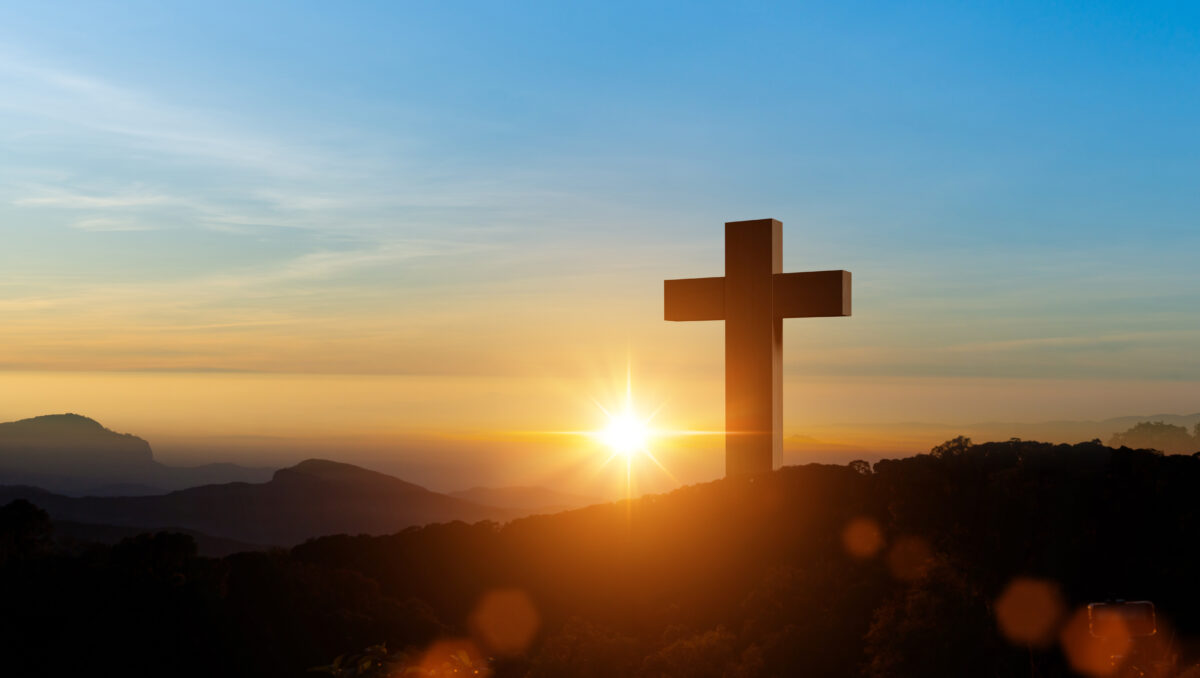
 By Cara Garrity, Development Coordinator, Lynn, Massachusetts, U.S.
By Cara Garrity, Development Coordinator, Lynn, Massachusetts, U.S.
 By Cara Garrity, Development Coordinator, Lynn, Massachusetts, U.S.
By Cara Garrity, Development Coordinator, Lynn, Massachusetts, U.S.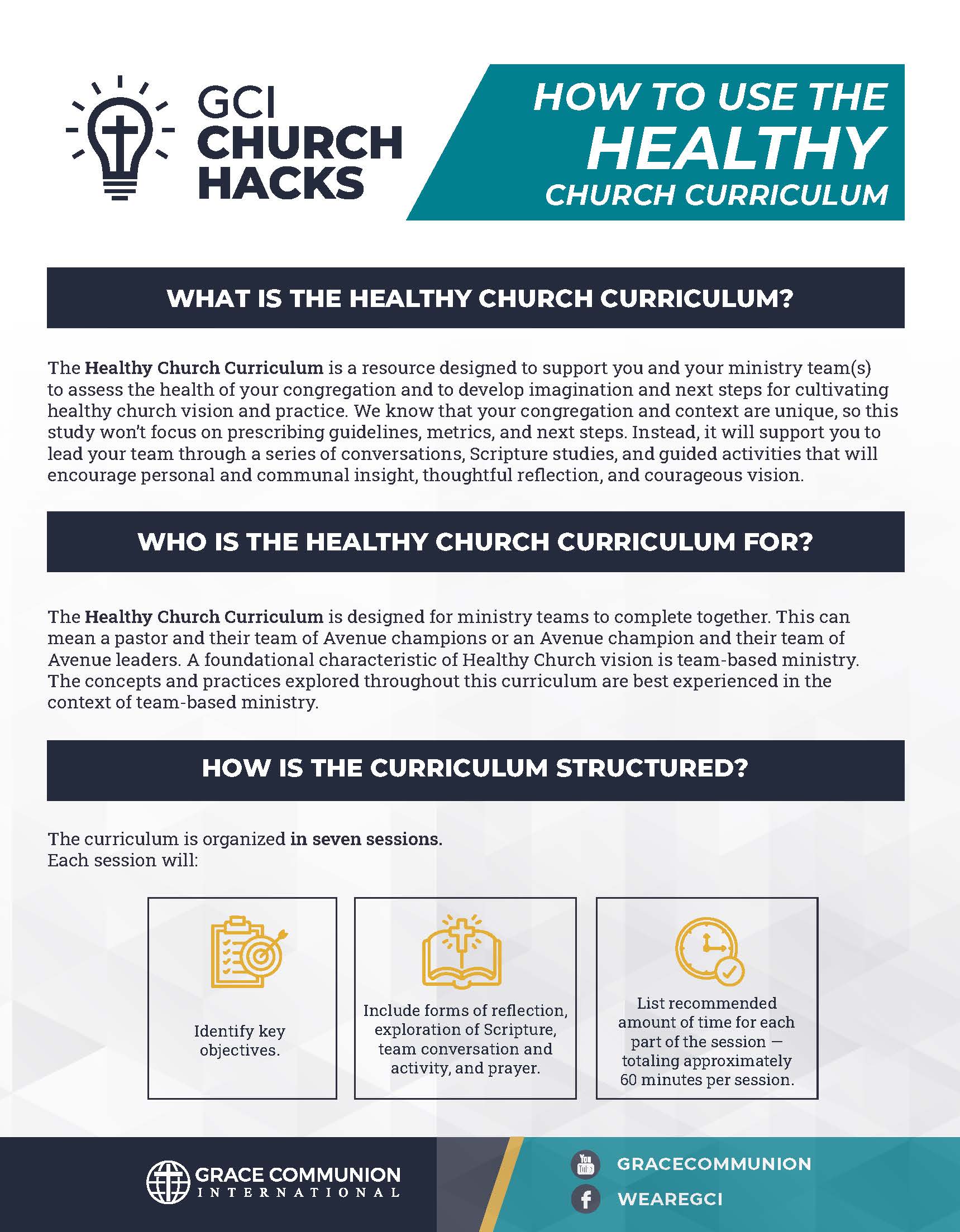
 By Ceeja Malmkar, Pastor
By Ceeja Malmkar, Pastor
 Michelle Hartman, Communications Director
Michelle Hartman, Communications Director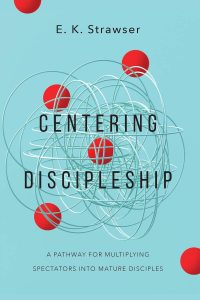
 On this episode of Gospel Reverb, Anthony Mullins, unpacks the May 2025 sermon pericopes with his guest, Dr. Christopher Blumhofer. Chris earned a PhD from Duke University and is an associate professor of New Testament at Fuller Theological Seminary in Pasadena, C.A. Prior to entering academia, Chris worked for three years with the leadership media group at Christianity Today. He has written extensively for general audiences and wrote the publication The Gospel of John and the Future of Israel. He is an ordained ruling elder in the Presbyterian Church (USA) and a member of the Society of Biblical Literature.
On this episode of Gospel Reverb, Anthony Mullins, unpacks the May 2025 sermon pericopes with his guest, Dr. Christopher Blumhofer. Chris earned a PhD from Duke University and is an associate professor of New Testament at Fuller Theological Seminary in Pasadena, C.A. Prior to entering academia, Chris worked for three years with the leadership media group at Christianity Today. He has written extensively for general audiences and wrote the publication The Gospel of John and the Future of Israel. He is an ordained ruling elder in the Presbyterian Church (USA) and a member of the Society of Biblical Literature.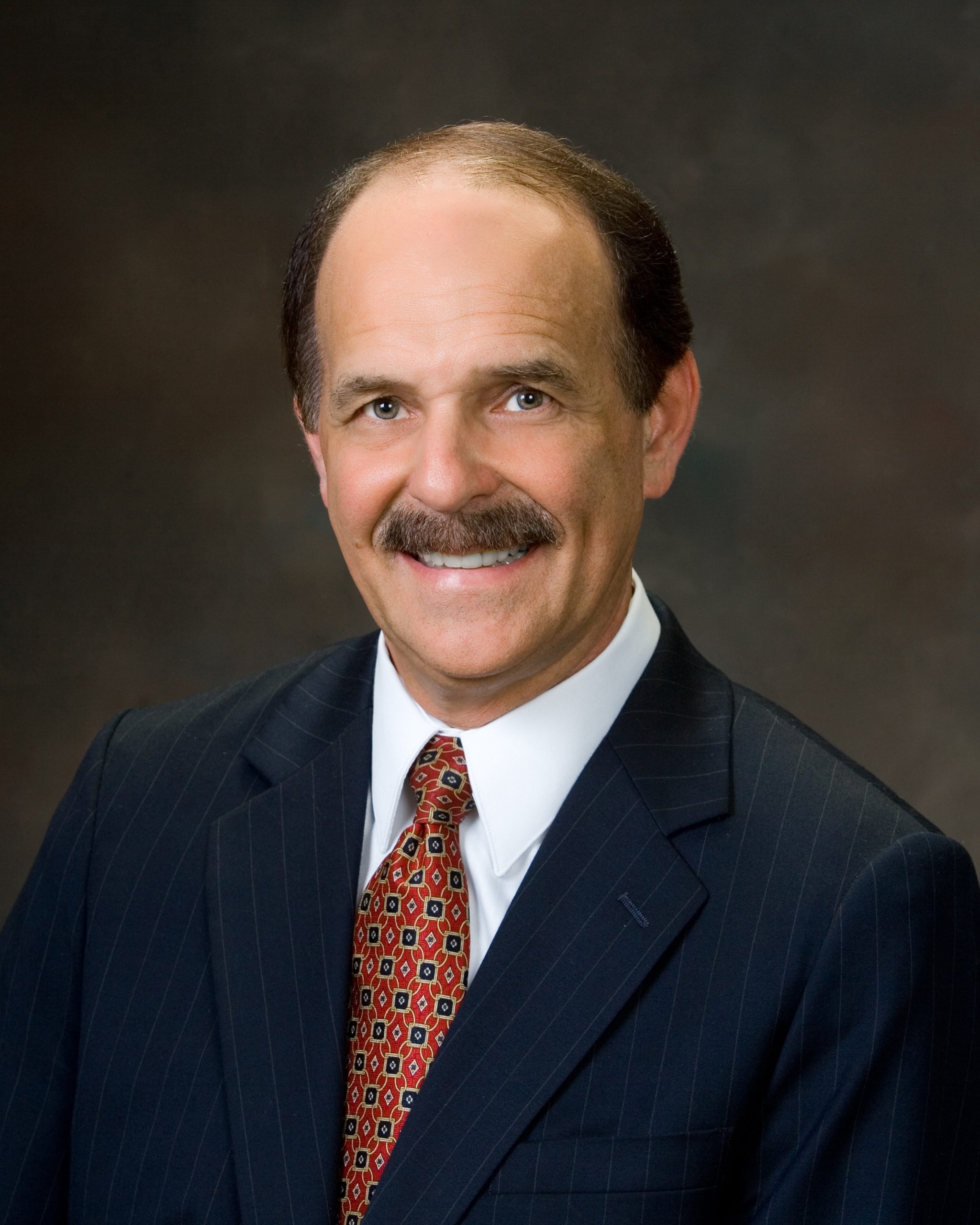 “Christ comes to redeem us, to make us right with God. And one of the results of that is that through Christ, we are also made right with each other. So that there’s a beginning in the heart and the mind and the lives of Christians, a turning away from the results of the fall, back toward what God designed in the first place, as we follow Christ. Redemption brings something new into the life, which is enabling, through the power of the Holy Spirit, to really live, then, the Christian ethics life.” — Dennis Hollinger
“Christ comes to redeem us, to make us right with God. And one of the results of that is that through Christ, we are also made right with each other. So that there’s a beginning in the heart and the mind and the lives of Christians, a turning away from the results of the fall, back toward what God designed in the first place, as we follow Christ. Redemption brings something new into the life, which is enabling, through the power of the Holy Spirit, to really live, then, the Christian ethics life.” — Dennis Hollinger


